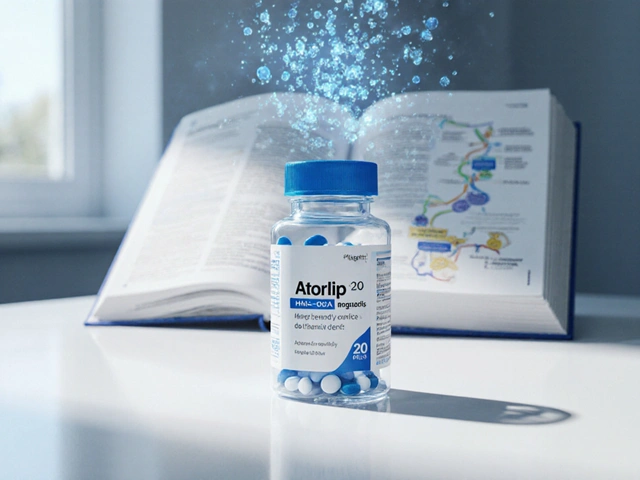You clicked because you want straight answers. Do potassium pills actually help? When are they risky? And how do you choose a dose without guessing? Here’s the no-drama version: the body runs on potassium to keep nerves firing, muscles contracting, and your heart’s rhythm steady. Supplements can help in specific cases, but they’re not casual vitamins. Used wrong, they can be dangerous. Used right, they can fix fatigue, cramps, and low lab numbers. I’ll show you what the science says and exactly how to approach it.
TL;DR: What the science actually says
- Potassium is an essential electrolyte that controls fluid balance, nerve signals, and heart rhythm. Low levels (hypokalemia) cause fatigue, cramps, irregular heartbeat, and can be life-threatening if severe.
- For most healthy adults, aim for roughly 2,600-3,400 mg/day from food. That’s the Adequate Intake range cited by the National Academies (2019). The WHO recommends at least ~3,510 mg/day for blood pressure benefits.
- Supplements help when you can’t meet needs from diet or when meds (like some diuretics) waste potassium. They’re not a shortcut if you have normal levels and a decent diet.
- Safety first: kidney disease, heart or blood pressure meds (ACE inhibitors, ARBs), potassium-sparing diuretics, and salt substitutes can push potassium too high. Always check meds and labs.
- Typical supervised correction uses 20-40 mEq/day split doses, but dosing is individualized. 1 mEq potassium ≈ 39 mg elemental potassium.
- Severe symptoms (weakness, palpitations, paralysis) or a potassium lab under ~3.0 mmol/L is urgent-seek medical care. This isn’t a DIY supplement situation.
How potassium works-and when you actually need a supplement
Potassium is the main positive ion inside your cells. It keeps the electrical gradient that lets nerves fire and muscles contract. Your heart depends on a tight potassium range. Lab reports usually show serum potassium in mmol/L. Normal is about 3.5-5.0 mmol/L for most labs in New Zealand and elsewhere. Below 3.5 is hypokalemia; above 5.0 is hyperkalemia.
Why does it drop? The common culprits are fluid loss (vomiting, diarrhea), medications (thiazide and loop diuretics like hydrochlorothiazide or furosemide), low magnesium, and very low dietary intake. High insulin doses or beta-agonist inhalers can also shift potassium into cells temporarily. On the other side, levels rise with kidney impairment, ACE inhibitors (e.g., enalapril), ARBs (e.g., losartan), potassium-sparing diuretics (spironolactone, eplerenone), and salt substitutes rich in potassium chloride.
How do you know if you actually need a supplement? Look at three things:
- Symptoms: fatigue, muscle cramps, constipation, heart palpitations, or muscle weakness can signal low potassium-especially if you’ve lost fluids or started a diuretic.
- Context: athletes sweating hard, people on low-carb diets, heavy coffee or alcohol intake, and those using laxatives or diuretics are at higher risk of depletion.
- Lab result: get a basic metabolic panel. If potassium is below 3.5 mmol/L, talk to your clinician about treatment. If you’re in the 3.5-4.0 range and symptomatic (or on a depleting med), food plus modest supplementation might be considered with monitoring.
What does the evidence say? Large reviews (NIH Office of Dietary Supplements, 2024) support potassium-rich eating for blood pressure and cardiovascular health. Supplementation can help correct deficiency and support blood pressure in some people, but it isn’t a universal fix. The American Heart Association highlights potassium from foods (like beans, veg, fruit, dairy, fish) as the first-line approach, especially alongside lower-sodium eating.
Bottom line: use potassium supplements when a specific reason exists-documented low levels, known losses, or a clinical goal-rather than “just in case.”

Dosage, forms, and how to take it safely
Two numbers matter with potassium: mEq (or mmol) and milligrams. Clinicians dose potassium in mEq. Shoppers see milligrams on bottles. Here’s the conversion you’ll actually use: 1 mEq potassium ≈ 39 mg elemental potassium. That’s the potassium ion only, not the weight of the salt (like citrate or gluconate).
Common forms you’ll see:
- Potassium chloride (KCl): most direct at replacing chloride losses (like from vomiting/diuretics). Often used in hospitals and prescriptions.
- Potassium citrate: also provides citrate, which can help prevent certain kidney stones and may ease metabolic acidosis in low-carb eating.
- Potassium gluconate: popular OTC, gentler on the gut for some people, but each tablet often contains only ~99 mg elemental potassium.
- Potassium bicarbonate: alkalinizing; sometimes used in sports or bone health contexts.
How much is typical? It depends on your lab value, cause, and kidney function. Examples you’ll see in practice (always individualized):
- Mild depletion (3.3-3.5 mmol/L): 20 mEq/day split doses for a few days to a week, then retest.
- Moderate depletion (3.0-3.2 mmol/L): 40-60 mEq/day split doses with repeat labs in 1-3 days.
- Severe or symptomatic (<3.0 mmol/L or with arrhythmia/weakness): urgent medical care; often IV replacement in a monitored setting.
Important: these are examples from clinical norms, not personal advice. People with kidney impairment or on potassium-elevating meds may need far less-or none.
Step-by-step: a safe way to start
- Check your meds and conditions. Red flags for supplement use: chronic kidney disease, ACE inhibitors/ARBs, spironolactone/eplerenone, trimethoprim, heparin, and potassium-containing salt substitutes. Talk to your clinician first.
- Get a baseline lab. Ask for a basic metabolic panel (includes potassium) and magnesium. Low magnesium makes low potassium stubborn.
- Set a food-first target. Try for 8-10 “potassium points” per day (see the food section below). If you’re close to target but still low, consider a modest supplement.
- Pick the form that fits the cause. Chloride losses? Consider KCl. Kidney stones or low-citrate diet? Potassium citrate may be better. Sensitive stomach? Gluconate can be gentler.
- Start low. If your clinician okays it, begin with 10-20 mEq/day (≈390-780 mg elemental) split with meals. Recheck labs in 1-2 weeks. Adjust with guidance.
- Never crush extended-release tablets. They can ulcerate the gut in high local concentration. If swallowing is an issue, ask for a liquid or powder.
- Be patient and measure. Potassium balance takes days to settle. Retest, don’t guess.
Gut comfort tips
- Take with food and a full glass of water.
- Split dosing (morning/evening) reduces nausea or cramping.
- If you get heartburn with chloride forms, citrate or gluconate may feel better.
Quick conversion cheats
- 10 mEq potassium ≈ 390 mg elemental potassium.
- A common “595 mg potassium gluconate” cap has only ~99 mg elemental potassium.
- 10 mEq potassium citrate is about 1,080 mg of the salt, still ≈390 mg elemental potassium.
Food vs pills: fast wins to raise intake
Foods bring potassium plus fiber, magnesium, and bioactive compounds that support blood pressure and vascular health. They spread the dose across the day and are much safer for most people.
Here’s a realistic cheat sheet. Per serving values are rounded; food composition data varies by variety and ripeness.
| Food | Serving | Potassium (mg) | NZ-available examples |
|---|---|---|---|
| Kūmara (sweet potato), baked | 1 medium (150 g) | ~500-700 | Red/Gold kūmara, common in supermarkets |
| Potato with skin, baked | 1 medium (170 g) | ~800 | Agria, Nadine |
| Banana | 1 medium | ~420 | Imported Cavendish |
| Avocado | 1/2 fruit | ~350 | Hass (NZ season: spring-autumn) |
| Leafy greens (spinach), cooked | 1/2 cup | ~400-450 | Fresh or frozen |
| Beans/lentils, cooked | 1/2 cup | ~300-500 | Chickpeas, kidney beans, lentils |
| Yoghurt (unsweetened) | 1 cup (245 g) | ~570 | Greek-style, plain |
| Tomato paste/sauce | 1/2 cup | ~600-700 | Passata, canned tomatoes |
| Salmon | 120 g fillet | ~550 | NZ farmed or canned |
| Oranges/orange juice | 1 large / 200 ml | ~330 / ~470 | Fresh or chilled juice |
How to hit your target through meals:
- Breakfast: plain yoghurt with banana and a sprinkle of oats (≈1,000 mg).
- Lunch: bean and spinach salad with tomato, avocado, and olive oil (≈1,200 mg).
- Dinner: baked kūmara and salmon, side of broccoli (≈1,100 mg).
That’s 3,000+ mg without trying too hard. If you’re on a budget, canned tomatoes, frozen spinach, and dried beans are cost-effective potassium sources. If you’re watching carbs, lean on greens, yoghurt, fish, mushrooms, and tomatoes rather than lots of starchy tubers. If you need a low-potassium diet because of kidney disease, you’ll do the opposite under a dietitian’s plan.
What about salt substitutes? Many use potassium chloride. They can help lower sodium intake, but in people on ACE inhibitors/ARBs or with kidney disease, they can spike potassium. If you use them, tell your GP and get periodic labs.

Risks, interactions, and real-world scenarios
High potassium (hyperkalemia) can be silent until it isn’t. Symptoms can include weakness, tingling, and palpitations. In serious cases, it triggers dangerous heart rhythms. This is why we respect the narrow range and check labs when meds change.
Who should be extra careful
- Chronic kidney disease, any stage
- Heart failure or diabetes with kidney involvement
- On ACE inhibitors (enalapril), ARBs (losartan), direct renin inhibitors (aliskiren)
- On potassium-sparing diuretics (spironolactone, eplerenone, amiloride)
- On trimethoprim (alone or in co-trimoxazole), heparin, or NSAIDs chronically
- Using potassium-based salt substitutes
In these groups, any supplement needs a clinician’s OK and a lab plan.
Medication interactions you can actually remember
- Meds that lower potassium: thiazide/loop diuretics, high-dose laxatives. You might need more intake; food first, then guided supplements.
- Meds that raise potassium: ACEi, ARB, spironolactone/eplerenone/amiloride, trimethoprim, heparin, NSAIDs. Adding supplements here can push you into danger.
- Insulin and beta-agonists (like salbutamol) can drive potassium into cells, transiently lowering serum levels.
Common pitfalls
- Fixing potassium without checking magnesium. Low magnesium blocks potassium repletion.
- Crushing extended-release tablets. This can irritate or ulcerate the GI tract.
- Assuming “99 mg” pills will fix a 3.1 mmol/L lab. They’re useful add-ons, not heavy lifters.
- Using potassium salt substitutes on top of potassium-raising meds.
- Skipping follow-up labs after starting or changing dose.
Decision guide (use this flow)
- Do you have kidney disease or take ACEi/ARB/spironolactone? If yes, do not self-supplement. See your clinician.
- Recent vomiting/diarrhea, new diuretic, or low-carb diet with cramps? Get a lab check, increase potassium-rich foods, hydrate, and consider a small supplement if approved.
- Asymptomatic, normal labs, and varied diet? Focus on food. You probably don’t need a supplement.
- Endurance event coming up? Practice your fueling. Add potassium-rich foods and fluids; only add supplements if you’ve tested the plan and checked meds.
Real-world scenarios
The runner on a low-carb cut: You’re training for a half and cut carbs. You feel calf cramps at night. Your labs are normal but on the low side. Try adding spinach, avocado, yoghurt, and a small glass of orange juice around training. If cramps persist, your clinician may green-light 10-20 mEq/day for a week and reassess.
The new thiazide prescription: You start hydrochlorothiazide for blood pressure. A week later, your potassium is 3.3 mmol/L, and you feel tired. Your GP adds 20 mEq/day in two doses for a few days and rechecks labs. Longer term, you eat more beans, tomatoes, yoghurt, and kūmara, and the supplement becomes occasional.
Living with CKD: Your eGFR is 45. Your potassium is 4.8 mmol/L. You’re on an ARB. You skip supplements and salt substitutes, work with a renal dietitian on a tailored plan, and monitor labs. Safety beats guesswork.
Mini‑FAQ
Note: The following Q&A is informational and not a substitute for personal medical advice.
- Is 99 mg enough to matter? It can help if you’re already close to target and fixing the cause. For bigger deficits, it’s usually not enough on its own.
- What time of day should I take it? Split doses with meals. Morning and evening works for most.
- Can I take magnesium with potassium? Often yes, and it can help if your magnesium is low. Avoid “stacking” multiple electrolyte powders without checking labels.
- Can foods alone fix low potassium? Often, yes-especially if the cause was temporary. Persistent low numbers need a workup.
- How fast will my level rise? Mild deficits can improve within days; test again in 1-2 weeks after changes.
- Can potassium cause stomach ulcers? High-concentration tablets can irritate the gut, which is why extended-release and taking with food matter. Regulators, including Medsafe (NZ), flag this risk.
- What about blood pressure? Diets high in potassium and lower in sodium support healthy blood pressure (AHA, WHO). Supplements help in select cases; food is the foundation.
Next steps and troubleshooting
- If your potassium is under 3.0 mmol/L or you have palpitations, severe weakness, or chest symptoms, seek urgent care.
- If you just started a diuretic, ask your GP for a lab plan (often within 1-2 weeks) and a list of potassium-rich foods.
- If you’re on an ACEi/ARB or spironolactone, tell your clinician before using salt substitutes, electrolyte drinks, or potassium powders.
- If cramps persist despite normal potassium, check magnesium, sodium balance, hydration, and training load.
- If supplements upset your stomach, switch forms (citrate/gluconate), reduce the dose, or try a liquid with meals.
Credible sources to read: NIH Office of Dietary Supplements (Potassium Fact Sheet, 2024), National Academies of Sciences (Dietary Reference Intakes, 2019), American Heart Association statements on dietary patterns and blood pressure, and WHO guidance on potassium and sodium intake. These organizations keep their guidance current, and clinicians use them to steer real-world decisions.






Chantel Totten
September 18, 2025 AT 13:15Potassium is one of those things you don't think about until your legs cramp at 3 a.m. I used to take supplements blindly until my doctor flagged my levels after I started a new BP med. Now I eat more spinach, sweet potatoes, and yogurt - no pills needed. Safety first, always.
Guy Knudsen
September 20, 2025 AT 07:13So you're telling me the government doesn't want us to fix our own electrolytes because Big Pharma needs us to keep buying pills? Interesting how they make 'danger' sound so scary when the real danger is being told what to eat
Terrie Doty
September 22, 2025 AT 04:00I've been researching this for months now because my mom has CKD and is on an ARB, and I wanted to understand why her doctor is so strict about salt substitutes and bananas. The way this post breaks down the interaction between meds and potassium is actually the most coherent thing I've read. I didn't realize how many common medications - even things like trimethoprim for UTIs - can silently spike potassium. It's not just about kidney disease, it's about the whole ecosystem of your physiology. I'm printing this out to share with my family, because honestly, most people think 'low potassium' means 'eat more bananas' and that's it. It's so much more nuanced than that.
George Ramos
September 23, 2025 AT 08:57Oh wow, another 'trust your doctor' propaganda piece. Let me guess - you also think fluoride in water is 'safe' and that your 'basic metabolic panel' is some sacred text written by angels? The FDA approves potassium pills, sure, but they also approved Vioxx. You think your 3.5 mmol/L is some magic number? Try living in a world where your body isn't a lab rat for Big Pharma's dosage charts. I take 99 mg of gluconate daily because I'm tired of being told what my cells need. My heart doesn't need your guidelines.
Barney Rix
September 23, 2025 AT 16:41The assertion that '1 mEq potassium ≈ 39 mg elemental potassium' is mathematically accurate, but the conflation of milliequivalents with milligrams in consumer products is a persistent source of clinical misinterpretation. The absence of standardized labeling across OTC formulations constitutes a significant public health risk, particularly in populations with polypharmacy. I would recommend mandatory inclusion of elemental potassium content on all packaging, per FDA guidelines, to mitigate iatrogenic hyperkalemia.
juliephone bee
September 25, 2025 AT 07:11i just wanted to say thank you for this post. i’ve been cramping every night and thought it was just from working out too hard. i got my labs done and my potassium was 3.2. i had no idea i was on a diuretic until i checked my med list - turns out my blood pressure pill was the culprit. i started eating more beans and avocado and cut out the salt substitute. i’m not taking any pills yet, just food. hope this helps someone else who’s clueless like me 😅
Ellen Richards
September 26, 2025 AT 12:07Ugh, I'm so tired of people acting like potassium is some mystical cure-all. I’ve been on spironolactone for 5 years, my potassium is always borderline, and I’ve had to fight doctors who think I’m just ‘not eating right’ when I’m literally eating a whole avocado every day. You think I don’t know about kūmara? I live in California, I’ve got a CSA box. But no - my meds are doing their job, and my body is just… different. Stop shaming people for needing help. This post is good, but the comments? Always the same: 'just eat more bananas.' No. Just no.
Renee Zalusky
September 28, 2025 AT 02:51There’s something quietly revolutionary about this post - not because it's flashy, but because it respects the complexity of human biology. We’ve been trained to think of nutrients as pills you pop like candy, but potassium isn't vitamin C. It's an electrical conductor woven into the fabric of your heartbeat. The fact that we’ve normalized self-prescribing electrolytes while ignoring magnesium co-deficiency is a symptom of a broken health culture. I’ve seen too many people take 99 mg pills for months and wonder why they’re still weak. It’s not about the number on the bottle - it’s about the context. Thank you for not reducing this to a supplement hack. This is medicine as art, not as algorithm.
Scott Mcdonald
September 29, 2025 AT 13:06Hey, I'm a personal trainer and I get this question all the time - 'Should I take potassium after my workouts?' I tell them: if you're sweating buckets and eating a normal diet, you're probably fine. But if you're on a keto cut, drinking coffee like it's water, and skipping veggies? Yeah, maybe add a banana to your post-workout shake. No pills needed. Just real food. And please, don't crush those extended-release tablets - I've seen guys end up in the ER because they thought 'more is better.'
Victoria Bronfman
September 30, 2025 AT 00:27OMG this is so helpful 🙌 I literally Googled 'potassium supplement for cramps' and ended up here - best thing I've read all week! I started eating more spinach and sweet potato and my leg cramps are gone!! Also, I didn't know avocado had so much potassium 😍 I'm gonna make avocado toast every day now 🥑✨
Gregg Deboben
October 1, 2025 AT 16:05They don't want you to know this - potassium is nature's original performance enhancer. The government bans real electrolytes because they don't want you to feel strong without their pills. I've been taking 40 mEq of KCl every day since 2020 - no doctor, no labs. My energy? Off the charts. My heart? Steady as a rock. You think your 'normal' range is safe? That's the range they want you stuck in. I'm not normal. I'm upgraded.
Christopher John Schell
October 1, 2025 AT 21:47Bro, this is gold. I used to think potassium was just for athletes, but after I started feeling like a zombie on my new BP med, I did the food thing - beans, yogurt, kūmara - and now I'm actually sleeping through the night. No more 3 a.m. cramps. I didn't need a pill. I just needed to eat like a human again. Thanks for the real talk - this is the kind of info that actually saves lives.
Felix Alarcón
October 2, 2025 AT 14:12My grandma in Colombia used to say, 'El potasio es el alma del cuerpo' - potassium is the soul of the body. She’d make us eat plantains, black beans, and oranges every day. No supplements. Just food from the earth. I didn’t understand it until I moved to the US and started eating processed stuff. Now I make her recipes every week. This post reminds me of her. Thank you for honoring food as medicine. We’ve forgotten how to listen to our bodies because we’ve been sold quick fixes.
Lori Rivera
October 2, 2025 AT 20:57The clinical guidance presented herein is methodologically sound and aligns with contemporary evidence-based practice. However, the absence of a discussion regarding inter-individual variability in renal tubular potassium handling, particularly in the context of genetic polymorphisms in the ROMK channel, represents a notable omission. Future iterations of this resource would benefit from incorporating pharmacogenomic considerations to enhance personalized risk stratification.
Leif Totusek
October 3, 2025 AT 18:37While the dietary recommendations are well-intentioned, the assumption that all individuals possess equal access to fresh produce, particularly in low-income urban areas, is empirically unsound. The suggestion to consume kūmara, avocado, and wild salmon as primary sources of potassium is economically inaccessible to a significant portion of the population. Policy-level interventions, such as subsidizing potassium-rich staples in food assistance programs, should accompany educational efforts to ensure equity in health outcomes.
KAVYA VIJAYAN
October 5, 2025 AT 01:00As someone who grew up in a village where we got potassium from coconut water, banana flowers, and ash from burnt plantain leaves, I’ve always found Western medicine’s obsession with milliequivalents and lab ranges a bit… detached. In my community, we didn’t have blood tests - we had symptoms. Cramps? Eat more greens. Fatigue? Drink coconut water. Weakness? Rest and eat lentils. The science here is valid, but the real wisdom is in the rhythm of eating with the season, not the spreadsheet. I’ve seen people in Delhi take 99 mg pills for months and still be weak because their magnesium was zero. No one told them. We didn’t need a PhD to know: food first, science second, ego never.
Jarid Drake
October 5, 2025 AT 21:52Just wanted to say I followed this advice - got my labs, switched to potassium citrate, started eating more beans and spinach, and my cramps are gone. I didn’t even need a full dose. Just a little nudge. Also, I stopped using that potassium salt substitute after reading this - my BP went down even more. Small changes, big results. Thanks for keeping it real.